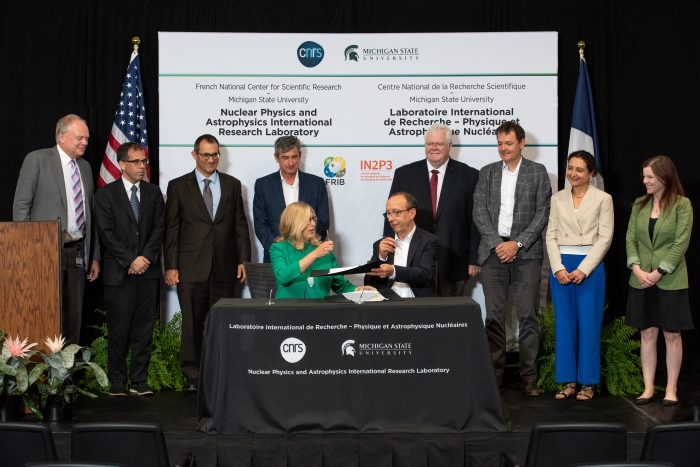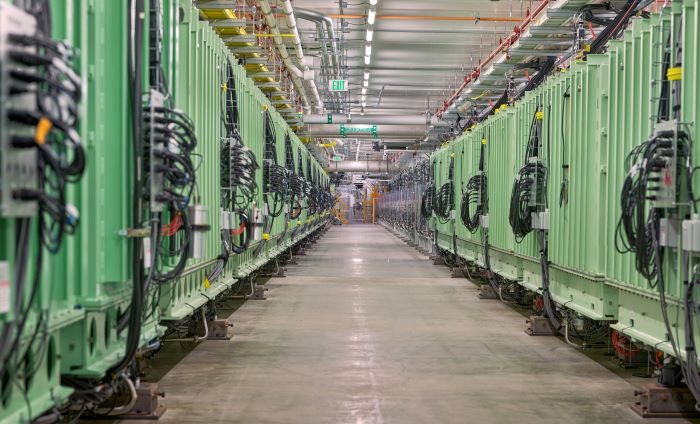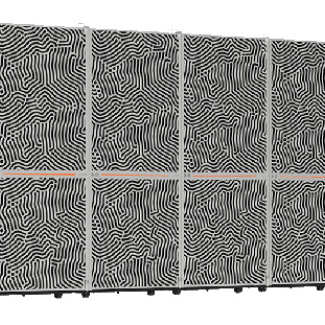
A new French-American laboratory for the physics of atomic nuclei
|
|
The CNRS and Michigan State University are joining forces to create the Nuclear Physics and Astrophysics Laboratory, an International Research Laboratory focusing on the physics of atomic nuclei, the role it plays in the properties of the matter surrounding us, as well as certain processes occurring in stars. This French-American laboratory, which will be based at the Facility for Rare Isotope Beams in Michigan, was created on 18 July in the presence of representatives from the CNRS and Michigan State University.
Out of sight but not out of mind: the links between the infinitesimally small and the infinitely large are quite strong. The mechanisms at play in the infinitesimally small atomic nucleus are closely connected to certain phenomena of the infinitely large, such as neutron star collisions, in which processes of heavy element nucleosynthesis occur.
It is at the intersection of these two infinities that the CNRS and Michigan State University have founded a joint International Research Laboratory (IRL), the Nuclear Physics and Astrophysics Laboratory. This new structure will strengthen the ties that already exist between French and American scientists in the field, particularly around the Large Heavy Ion Accelerator (GANIL, CNRS/CEA)1 , and American scientists from the Facility for Rare Isotope Beams (FRIB)2 , a reference in the field in the United States.
In combining their expertise, the scientists of this new laboratory will conduct research on exotic nuclei, which is to say nuclei that cannot be found in their natural state, that have a large excess of protons or neutrons, and that have a very short half-life. These nuclei will be produced in large numbers, and will be studied using two new installations: Spiral2 at GANIL and FRIB at Michigan State University. The researchers will study their properties and help formulate sophisticated theoretical models describing these extremely complex systems as precisely as possible, as well as try to better understand interaction that binds nucleons—protons and neutrons—to one another within nuclei. They will also study key reactions occurring in astrophysical processes. In addition, their research will focus on instrumental developments of shared interest to the two installations at GANIL and FRIB. This French-American laboratory will play a role in sharing knowledge within the community by promoting exchange, and by hosting students and postdoctoral fellows.
Based at the offices of FRIB in East Lansing, Michigan, it will also serve as a showcase for the French physical community. It is the CNRS’s seventh international laboratory in the United States. It will strengthen the CNRS’s historical presence in the country, and will promote active cooperation between the French research organization and various American scientific institutions.

© Harley J Seeley Photography / Facility for Rare Isotope Beams

© FRIB

© CNRS/IN2P3/CEA


